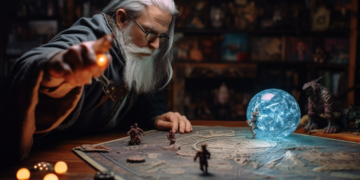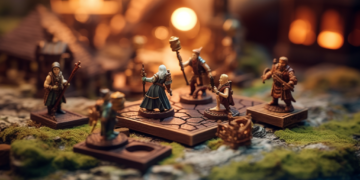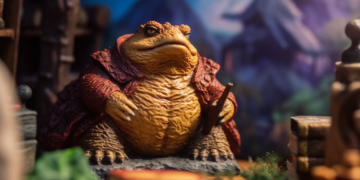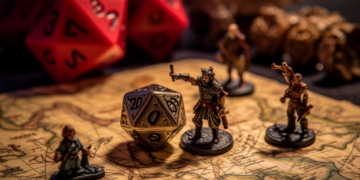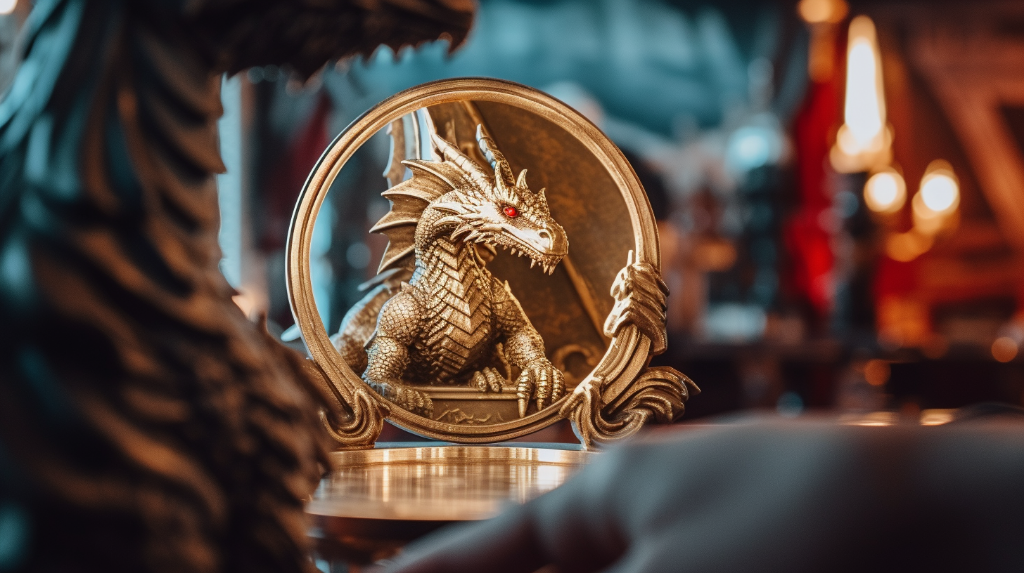
Imagine stepping into a room of mirrors, your reflection copied and pasted across innumerable surfaces, each copy as real to the eye as the original. Such is the mesmerizing magic of the Mirror Image spell in Dungeons & Dragons 5e. Illusion spells have always held a special place in the arcane arsenal of D&D, with their ability to bend reality, confuse enemies, and create opportunities for clever gameplay. Among these, the Mirror Image spell stands out for its intriguing premise and game-altering potential.
Spell Basics: Breathing Life into Illusions
The Mirror Image spell, a staple among illusion spells, is a second-level spell available to a range of classes. With a casting time of just one action, it creates illusory duplicates of yourself that last for a minute. The spell doesn’t require concentration, freeing the caster to weave other spells or engage in combat while their duplicates confuse and distract their enemies.
When you cast Mirror Image, three illusory duplicates appear in your space, mimicking your actions and making it difficult for your enemies to target you accurately. These duplicates move with you and mimic your actions, providing an impressive and deceptive visual spectacle.
Mirror Image Mechanics: Becoming a Hall of Mirrors
When you cast the Mirror Image spell, it’s as if you’ve stepped into a hall of mirrors. Each time a creature targets you with an attack, the spell has the potential to direct the attack to one of your duplicates. The duplicates have an Armor Class of 10 + your Dexterity modifier. If an attack hits a duplicate, it’s destroyed. Duplicates can also be destroyed by area effects that don’t require an attack roll. As your duplicates decrease, so do the odds of the spell redirecting an attack, making each remaining duplicate even more precious.
It’s worth noting that the spell doesn’t increase your own Armor Class. Instead, it creates a probability that attacks will be directed away from you, effectively increasing your chances of avoiding damage.
Class and Race Interactions with Mirror Image
As a spell of the illusion school, Mirror Image is most commonly associated with the Wizard class, but it’s also available to Sorcerers and Bards. The Trickery Domain for Clerics also grants access to Mirror Image. For races, the High Elf’s bonus wizard spell can be used to learn Mirror Image, adding an extra layer of defense to this already versatile race.
Specific character builds can also leverage this spell to great effect. For instance, a Wizard or Sorcerer focusing on control or manipulation spells can use Mirror Image to increase their survivability, while a Bard can use it to safely maintain concentration on other spells that bolster their allies or hinder their enemies.
Tactical Uses: Turning Reflections into Reality
Have you ever considered the tactical implications of wielding a spell like Mirror Image in a game of D&D? With a flick of your wrist and a quick incantation, you can turn a simple reflection into a formidable reality. Mirror Image is not just about creating duplicates of yourself; it’s about manipulating the battlefield to your advantage. Let’s explore how.
Defensive Strategies: A Smoke and Mirrors Game
When it comes to defense, Mirror Image is as elusive as a shadow on a moonless night. Imagine being surrounded by enemies, their weapons gleaming with lethal intent. You cast Mirror Image, and suddenly, instead of one target, your foes see four. The odds are now in your favor, as the enemy must discern the real threat among the illusions. Isn’t that a game-changer?
Not only does Mirror Image augment your ability to dodge attacks, but it also confuses your adversaries, causing them to waste their strikes on mere illusions. This buys you precious time to strategize, recover, or make a daring escape. Remember, in D&D, time can often be the difference between a heroic triumph and a tragic defeat.
Offensive Strategies: Becoming a One-Man Army
On the offensive front, Mirror Image can be a wild card, adding an element of unpredictability to your assault. Imagine the fear and confusion in your enemies’ eyes as they face not one, but multiple versions of you. Can you see how this could create opportunities for strategic attacks and diversions?
With your adversaries distracted by your illusions, you can seize the opportunity to strike, unimpeded and unanticipated. The chaos created by your duplicates can also serve as an effective diversion, allowing your allies to position themselves favourably or even escape a dire situation. In essence, Mirror Image can transform you into a one-man army, a force to be reckoned with.
Interaction with other Spells: A Symphony of Illusions
Like a melody harmonizing with different notes, Mirror Image can be orchestrated with other spells to create a symphony of illusions. Certain spells can dispel it, some can enhance its effect, while others may find themselves bypassed by this spell’s unique mechanics. Indeed, understanding these interactions is crucial to maximizing the potential of Mirror Image.
For instance, spells like True Seeing can see through the illusion, making the caster vulnerable once again. Conversely, spells like Blink or Misty Step used in conjunction with Mirror Image can further enhance your evasiveness. Also, it’s worth noting that certain area-of-effect spells bypass the protection of Mirror Image, as they affect an area rather than targeting an individual.
So, are you ready to weave a web of illusions and outwit your foes in your next D&D session? Remember, a wise wizard knows when to cast a spell, but a true master understands how to weave them together for maximum impact.
Story and Roleplay Applications: Mirrors in the Narrative
Ever thought about the allure of illusions in a compelling narrative? How can the mirror image spell, a simple yet profound illusion, be woven into the rich tapestry of your character’s backstory or the overarching quest of your campaign?
Imagine a cunning illusionist, their identity shrouded in mystery, using mirror image to confuse and misdirect. Or perhaps a haunted hero, using mirror image as a metaphorical representation of their fragmented self. The potential for narrative depth is boundless.
The spell can also be a pivotal plot point in a quest. A villain might use it to mislead the heroes or to escape a perilous situation. Conversely, it could be a tool for the heroes to get the upper hand in a crucial moment.
Remember, the charm of D&D lies not just in combat mechanics, but also in immersing oneself in another world, in walking in the shoes of a character that you breathe life into. So why not let the mirror image spell be a part of that vibrant narrative?
The Pros and Cons: Reflecting on Mirror Image
As with any spell, mirror image comes with its own set of advantages and drawbacks. Let’s take a moment to reflect on these, shall we?
On the positive side, mirror image offers an excellent defensive mechanism without requiring concentration, making it a valuable asset for spellcasters. It’s a clever way to confuse enemies and potentially avoid numerous attacks. Its non-concentration nature also means it can be used in conjunction with other spells for a potent combo.
However, the spell isn’t without its flaws. Its effectiveness is largely dependent on chance and can be completely bypassed with spells that don’t rely on attack rolls. Moreover, it does nothing against area of effect (AoE) spells, which can easily wipe out the duplicates.
Now, let’s compare mirror image to some other defensive spells in D&D 5e:
| Spell | Pros | Cons |
|---|---|---|
| Mirror Image | Doesn’t require concentration, potentially avoids multiple attacks | Effectiveness dependent on chance, vulnerable to AoE spells and spells without attack rolls |
| Shield | Instantaneous use, adds +5 to AC, negates magic missile | Only lasts until the start of your next turn, uses your reaction |
| Mage Armor | Lasts for 8 hours without concentration, offers a solid boost to AC | Doesn’t stack with other sources of AC, uses a spell slot |
| Blink | Potentially avoids all damage and effects, doesn’t require concentration | Effectiveness dependent on chance, user can’t do anything else while in the Ethereal Plane |
Mastering Mirror Image: Tips and Tricks
Now that you’ve delved into the heart of the mirror image spell, it’s time to polish your skills and reflect on the strategies that can turn this illusion into a game-changing reality. Whether you’re a seasoned spellcaster or a novice wizard, these tips and tricks will help you master the mirror image spell and use it to its fullest potential.
- Timing is crucial: Use mirror image when anticipating high-damage attacks. Its purpose is to divert and reduce incoming damage, so make sure you cast it before the battle begins.
- Positioning matters: Place yourself strategically on the battlefield. You want your enemies to be within range, but not so close that they can easily target you.
- Use other spells strategically: Combine mirror image with other illusion spells or invisibility for a greater chance of avoiding attacks.
- Consider your allies: Ensure your allies know you’ve cast mirror image, so they don’t waste their attacks on your duplicates.
- Remember your limitations: Keep in mind that while mirror image is active, you can’t cast spells that require concentration.
Concluding Thoughts: The Magic of Reflection
And there you have it – a comprehensive journey into the mesmerizing world of the mirror image spell. The illusion of duplication not only blurs the line between image and reality, but also opens up a multitude of strategic possibilities on the battlefield.
From becoming a walking hall of mirrors to using your duplicates as deceptive pawns, mirror image is a testament to the versatility and creativity inherent in D&D 5e. So, why not add another layer of depth to your gameplay and experiment with this spell?
Do you have any interesting stories or unique strategies related to mirror image? What illusion spell do you find most intriguing in D&D? We’d love to hear your thoughts and experiences. Share in the comments below and let’s keep the conversation going!

